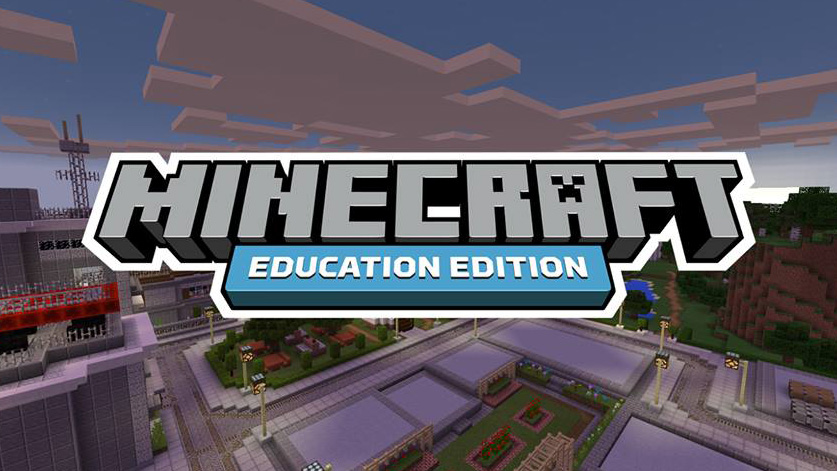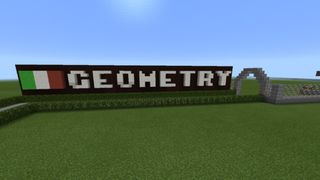A guide to Minecraft: Education Edition
Build and learn: an education in Minecraft: Education Edition

After months of development and testing, Microsoft has finally launched Minecraft: Education Edition, a learning-focused version of the game that’s been designed for the classroom.
To the uninitiated it might have seemed like a slightly odd development move from Microsoft. It's all about building huts and fighting walking cacti-looking things, right?
But when Minecraft started development on the game, it was already being used in over 7,000 classrooms in over 40 countries in the form of MinecraftEdu, a third-party education-focussed build of the game. Sensibly, Microsoft seized on this and acquired MinecraftEdu, using it as the basis for the game it’s now rolling out to classrooms in 11 countries.
What is it?
So, how is Minecraft: Education Edition any different from standard Minecraft? Well, not that much different it seems. It’s the same basic gaming experience (crafting, building and creativity-fuelling teamwork) and visuals (blocky) but with extra tools added to effectively integrate it into a classroom environment.
The aim of Education Edition is to use the open plan Minecraft world to promote creativity, problem solving, and collaboration between students.
There are lesson plans in a wide range of subjects, including science, technology, engineering, math, history, languages, and art for a variety of ages.

Examples of lessons include exploring and understanding deforestation by having students create Minecraft worlds which show the before and after effects of deforestation and discuss calls to action for slowing the process.
Get the best Black Friday deals direct to your inbox, plus news, reviews, and more.
Sign up to be the first to know about unmissable Black Friday deals on top tech, plus get all your favorite TechRadar content.
There are also geometry lessons which have classes construct shapes in order to learn about the concepts of perimeter and area and recreations of historical settings.
Why is it worth your time?
The lessons enabled by Minecraft are much more visual and immersive than anything students could get from a textbook or physical group work. For students who struggle to get their heads around things like fractions by looking at numbers alone, seeing them used in these familiar digital settings could be a huge help.
According to Microsoft, the use of play-based learning in a virtual environment that students are familiar with is much more engaging for students.
Not only that, it’s an organised and more manageable way to enable students to collaborate. In classes with larger numbers of students, it can be difficult for teachers to control multiple groups of students working on different projects.
Minecraft: Education Edition includes classroom specific tools that make it easier for teachers to bring creative collaboration into the classroom and make sure all of their students are getting the most out of a lesson. The tools include a map through which teachers can track the location of their students in the game, as well as in-game chalkboards, and worlds themed around the lesson plans.
Who's it for?
Minecraft: Education Edition is primarily to be used in classrooms. At the moment there are lesson plans for students from the ages of 5 all the way up to college level.
Microsoft says the game is supposed to create “unique and creative learning experiences for educators and students alike”. However, it seems like it could be an added pressure for educators.
Though the Microsoft website is already populated with a wide range of creative and interesting lesson plans, these aren’t endless and Microsoft is counting on teachers to add more worlds and lesson plans themselves.
The problem is, creating a Minecraft world is a time consuming process, even for someone familiar with the game. To help teachers completely new to the Minecraft world, Microsoft offers a Minecraft Mentor program which will teach them how to effectively integrate the game into their classroom.
It’s great that Microsoft is able to offer this. However, it seems unfair and impractical to expect that teachers should spend their days teaching lessons and their evenings not only planning future lessons, but building virtual worlds for them too.
Is it worth it?
Microsoft: Education Edition certainly offers students a dynamic and interesting learning experience. But it’s unlikely that it will take over the classroom considering the pressure it puts on educators to create worlds and plan lessons that use them effectively.
As well as this, the software isn’t free. Costing $5 (around £4 / AU $7) per student for a year’s subscription, it’s a costly addition to the classroom and requires students to have regular access to computers equipped with either Windows 10 or macOS, which not all schools can manage.
For a fun home experience, you’re better off with standard Minecraft. However, for any schools or home educators looking to get started with the Education Edition, you can get check it out on the Microsoft website.
- Minecraft isn't just helping students, it's also teaching AI a thing or two
Emma Boyle is TechRadar’s ex-Gaming Editor, and is now a content developer and freelance journalist. She has written for magazines and websites including T3, Stuff and The Independent. Emma currently works as a Content Developer in Edinburgh.
